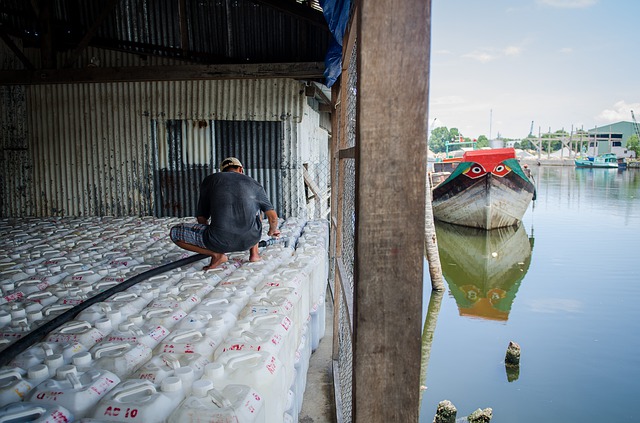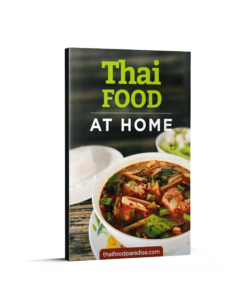What Can You Use Instead of Fish Sauce in Thai Dishes?

In a widely-read recent article on this blog inspired by a reader’s email, I suggested four oyster sauce alternatives. In this post, I want to expand on that idea by talking about fish sauce alternatives.
As you know, fish sauce is practically a staple condiment in Thai food. It features in even more Thai dishes than oyster sauce. And it’s made from fermented fish. Not everyone can eat fish-based products due to allergies or dietary reasons. The prevalence of fish sauce in recipes can be off-putting if you want to cook Thai food and don’t know about any good alternatives.
What To Use Instead of Fish Sauce
Fish sauce brings a uniquely salty, savory flavor that enhances the taste of everything it’s added to. Well, not everything: don’t go putting it in your mango with sticky rice!
Its pungent aroma is distinctly fishy in character, but thankfully the taste differs a lot from the smell. But what can you use to replicate it if you don’t want to add fish sauce to your food?
1. Vegan Fish Sauce
An exciting new brand arrived on the scene lately named Terfuna Fysh. What is exciting is their vegan fish sauce, which is made from seaweed and tamari, which is a gluten-free soy sauce.
This vegan version of the famous Thai condiment does a pretty good job of replicating its taste. It is by no means perfect, but there’s a definite savory and salty hit from it that tastes almost as funky as the real thing. Definitely worth trying out.
2. Golden Mountain Seasoning Sauce
I adore Golden Mountain seasoning sauce. It adds a delicious salty taste to dishes and it’s made from fermented soybeans. Because this sauce is somewhat saltier than soy sauce, it does a better job of replicating the taste of nam pla than regular old soy sauce.
Thais love using Golden Mountain seasoning. If you go to a regular Thai restaurant and tell them you don’t want any nam pla in your food, they will almost certainly add this stuff to the dish instead to ensure it still tastes good. You can order a two-pack of bottles here and they’ll last you six months.
3. Miso + Thin Soy Sauce
Third on my list of recommended alternatives to fish sauce is a combination of Japanese miso and thin soy sauce. The recommended soy sauce brand is Healthy Boy; it’s by far my favourite. It’s also the number one brand in Thailand and you can find it at convenience stores like 7-Eleven in all parts of the country.
The soy sauce on its own doesn’t have the funky umami bite that nam pla adds to dishes. For that, I recommend augmenting with some Japanese miso paste. You’ll get a lovely additional savory hit. The solution is to swap every tablespoon of fish sauce for one tablespoon of thin soy mixed with one teaspoon of miso paste.
4. MSG
A somewhat controversial suggestion I know, but hear me out. There is practically zero evidence that MSG is harmful to anyone. MSG is simply a sodium ion attached to glutamate. There is no science behind any claims of danger.
Now, the human body is a uniquely complex structure. So there could be some people that get weird side effects or sensitivities from it. But it’s very uncommon and unlikely.
It’s worth noting that if you’ve ever been to Thailand and eaten anything there from a street food stall, I am 99% sure you’ve eaten MSG. It’s very common in Thai cooking.
With all this in mind, I am happy to suggest MSG as a fish sauce substitute if the other options on this list are unfeasible or don’t appeal to you. It won’t give you exactly what you need, but it will do a pretty good job of replicating that umami, salty hit your food needs.
The Making of Fish Sauce

This popular Thai condiment is made by preserving fish in barrels with salt for anywhere between three months and three years. The Thais call fish sauce nam pla (น้ำปลา) and you’ll see bottles of it beside pretty much every single table at every street vendor and restaurant in the entire country.
To give you further details in case you were curious, enzymes degrade the tissue of the fish into a slurry (eugh!). Eventually, this issue degrades down into a clear tan liquid with the help of a decanting and filtration process. Reading this description alone would be enough to put you off this condiment. Thankfully, the taste is far better than the fish sauce production process.
Countries all over Southeast Asia, including Vietnam and the Philippines, make their own versions of this condiment. But since this is a Thai food blog, that’s what I’m focusing on. Fish sauce is to Thais what table-side salt and pepper are to Westerners. It’s that important. It’s added to many Thai recipes before cooking, during cooking, and after cooking.
Closing Thoughts
I hope that the popularity of fish sauce in Thai recipes does not put you off attempting to cook some dishes from this amazing cuisine. Yes, it is a unique condiment, but you don’t lose the entire flavor if you substitute it wisely. These four alternatives give the best chance of getting some authentic Thai flavors without adding real-deal nam-pla to your food. Good luck and let me know which of these options you try.
I lived in Thailand for a few years during my 20s during which time I fell in love with Thai food. Along with my Thai partner, I cook and eat tasty Thai dishes 3 or 4 times per week. I’m here to bring you recipes, Thai food tips, and suggested cookware for making Thai food.


